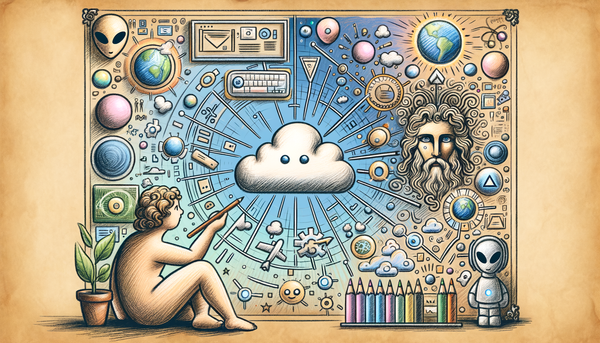AI Innovations: Chip Designs, Photography, and Future Technologies

Microsoft’s abrupt pullback on international data center leases, juxtaposed with bold investments in AI, set the stage for an industry rethinking its capacity needs, while startups like Fractile and tech giants like Google revolutionize hardware and software to redefine our digital future.
Microsoft’s AI Bet and a Quiet Retreat
It’s intriguing how major tech players sometimes seem to walk a tightrope between ambition and caution. Just days after CEO Satya Nadella’s confident proclamations about ramping up AI capacity, emerging reports hint at a more measured approach. Microsoft is reported to have canceled leases with two U.S. data center operators, stepping back from what many expected to be an even more aggressive expansion.
This shift has raised eyebrows among experts, who speculate that the tech giant is strategically recalibrating its AI infrastructure—a move that might be driven by an anticipation of oversupply or shifting demand forecasts. Interestingly, despite this tactical pause, Microsoft has not wavered in its long-term commitment, earmarking a staggering $80 billion for AI initiatives this fiscal year. It’s a fascinating case of balancing a narrative of rapid expansion with the pragmatic constraints of operational efficiency.
There is also the underlying connection with OpenAI that adds another layer of complexity. Think of it as a chess game where every move is calculated; while some data center expansions are on hold, the investment in AI research and development keeps the overall momentum roaring. In some ways, this strategy mirrors broader themes on AI challenges and consumer tech trends discussed on AI.Biz, where leaders often have to decide between scaling quickly or building more sustainable infrastructures.
"Artificial intelligence is the new electricity." - Andrew Ng, Machine Learning Yearning
This iconic remark resonates even more today, as we witness a dichotomy in the tech sector where rapid innovation battles with real-world limitations. Perhaps, Microsoft’s choice is a reminder to the industry: even in the age of AI, scale must be managed responsibly.
Innovative Hardware Revolution: Fractile’s Bold Moves
In another corner of the AI universe, Fractile, a startup founded by robotics expert Walter Goodwin, is making waves with its breakthrough chip design. This isn’t just about incremental improvements—Fractile’s design promises chips that are up to 100 times faster, cost 10 times less, and consume only a fraction of the energy used by current GPUs from industry giants like Nvidia.
Emerging from stealth mode and having the backing of high-caliber advisors, including former Intel CEO Pat Gelsinger, the startup aims to break new ground in AI processing. The secret sauce appears to be an innovative integration of memory and computation on a single chip. By drastically reducing data transfer bottlenecks, Fractile could pave the way for more efficient AI inference, potentially reshaping how we design and use AI across various sectors.
This development is particularly riveting when considering the race to build a hardware ecosystem optimized for AI workloads. Where Microsoft is rethinking its data center capacity, Fractile's vision suggests that software and hardware must evolve in tandem for true breakthroughs. Their work shows how intertwined the future of AI is with hardware innovation—a subject that echoes through many discussions, from debates about generative AI challenges to transformative tech trends.
Imagine an AI system operating with the efficiency of a well-oiled machine, capable of crunching data at unprecedented speeds without the crippling power demands of yesteryear. It’s an exciting glimpse into a future where AI is both more accessible and more sustainable.
Anticipating the AI-Powered Phone Revolution
Although details remain sketchy for some upcoming devices, whispers in the tech corridors hint at an “AI Phone” set to launch in 2025 at an eye-popping low price. The market buzz suggests that this device will blend cutting-edge AI capabilities with affordability, echoing a broader shift in consumer technology where smart assistants and AI-powered functionalities become mainstream.
In many ways, this development isn’t surprising. As AI integration deepens in our daily gadgets—from Google Pixel’s innovative steps to the next generation of smartphones—the barrier to entry for practical, AI-driven digital experiences is rapidly lowering. This democratization of technology could witness a surge in innovation, where even modest devices leverage extensive AI functionalities, from real-time translation to context-aware recommendations.
The prospect of an affordable AI Phone invites us to reimagine how we interact with technology in everyday life. It hints at a world where the benefits of advanced AI are no longer confined to high-end models but are available to a broader consumer base. This evolution mirrors changes in other tech verticals and resonates with the forward-thinking narratives on AI transformations that we have explored on Apple’s AI optimism and beyond.
The Blurred Lines between Photography and AI: Promptography
Art and technology have shared a unique relationship for decades, but the recent exhibit in Berlin, which showcased the merger of traditional photography with AI-generated art, elevates this interplay to new heights. The show, titled "Rivals: Photography vs. Promptography," was a vibrant expression of creativity where both mediums challenged conventional definitions of art.
One of the highlights was “The Electrician,” an AI creation by Boris Eldagsen that stirred controversy after winning a prestigious award—only to be later rejected by the artist to make a statement on the disparities of AI versus human touch. Alongside this, the exhibit featured the striking "Flamingone" by Miles Astray and other provocative works that blurred the lines between authentic photography and digital creation.
The exhibition sparked debates on the authenticity, ethics, and creative merit of AI in art. It reminds me of historical moments when photography itself revolutionized art, challenging its own boundaries. Today, with the advent of AI, we are witnessing a similar evolution, which sparks conversations about the very essence of creativity. For those keen on further exploring the convergence of art and technology, our article on Exploring the Intersection of Photography and AI on AI.Biz offers some fascinating insights.
"Art is not what you see, but what you make others see." - Edgar Degas
The exhibit not only celebrated technological innovation but also underscored the importance of preserving human creativity in an era dominated by algorithms. It poses a crucial question: In a world where AI can mimic human art, what remains uniquely human?
Empowering Solopreneurs with AI Agents
For the solo business owner juggling multiple roles, emerging AI agents are quickly becoming indispensable allies. These virtual assistants are not merely about automation; they are about transformation. With capabilities ranging from handling customer support to optimizing marketing strategies, AI agents empower solopreneurs to focus on growth rather than getting bogged down by mundane tasks.
Imagine a scenario where your calendar is managed flawlessly, customer queries are answered in a snap, and even your content creation for social media and email campaigns receives a creative boost—all thanks to a smart AI system working tirelessly in the background. This isn’t a distant dream; it’s a reality for many who have embraced tools that streamline workflows and provide actionable insights into market opportunities.
Leveraging automation tools like Zapier, and advanced assistants like Auto-GPT, solopreneurs can identify new opportunities while ensuring their core business remains uncompromised. Such technologies not only free up time but also enhance decision-making capabilities by sifting through data and presenting only the most pertinent information.
The narrative here is clear: while technology continues to infiltrate every aspect of business, its true power lies in amplifying human potential. For a deeper dive into how AI is transforming business strategies, check out our feature on Generative AI Challenges and Consumer Tech Innovations over at AI.Biz.
Pixel-Perfect Future: Google Pixel 10 and Its AI Assistant
Another milestone in the AI revolution is the forthcoming launch of the Google Pixel 10, which is set to debut with an AI-powered assistant initially dubbed "Pixie," now known as Pixel Sense. This assistant promises to redefine how users interact with their devices by combining smart context-aware predictions with robust privacy safeguards. Pixel Sense will integrate deeply with Google’s suite of applications, effectively learning from and adapting to user habits.
Picture this: you capture a memorable moment, and your device intuitively guides you to tag and categorize the memory, offering suggestions on sharing options and even curating a digital album. By leveraging data from calendars, emails, and multimedia files—all stored securely on your device—Pixel Sense ensures that privacy is never compromised. This focus on on-device intelligence marks a significant shift from previous AI implementations that often relied on cloud-based data.
Google’s approach here is both innovative and user-centric. In a landscape where AI is rapidly evolving, balancing advanced functionality with robust data security has become paramount. Pixel Sense brings a fresh perspective by ensuring that even as AI becomes more integrated, users remain in control of their personal information.
This development stands as a testimony to how AI is shaping consumer technology in real-time, much like other breakthroughs we’ve discussed on our platform. It complements narratives around AI-enhanced productivity and creative applications, reinforcing the idea that thoughtful integration can enhance usability without sacrificing privacy.
Big Finance and the AI Frontier
The financial sector, too, is not immune to AI’s transformative impact. In a recent discussion, Goldman Sachs' Chief Investment Officer shed light on what AI could mean for the global markets by 2025. According to the CIO, industries that strategically adopt AI are likely to lead the charge in innovation, productivity, and profitability.
From streamlining operations to infusing advanced analytics into market strategies, AI stands to recalibrate the very foundations of financial markets. The CIO pointed out that while every technological leap comes with its set of challenges, the potential upside of embracing AI far outweighs the risks—provided that companies remain agile and adaptable.
This perspective reinforces the broader narrative that whether it’s tech behemoths like Microsoft or nimble startups like Fractile, the future of AI lies in striking a balance between bold innovation and measured, responsible growth. For those fascinated by where AI might lead the finance sector next, the detailed insights provided by Goldman Sachs offer a compelling case study in the smart integration of technology.
Reflections and the Road Ahead
Observing these diverse yet interconnected developments, I'm struck by the sheer dynamism of the AI ecosystem. Whether it's Microsoft rethinking its infrastructure, startups challenging the hardware status quo, or traditional industries reinventing their operational models with AI, the pace of transformation is unrelenting.
It’s a landscape where every player, from global giants to intrepid solopreneurs, finds purpose in harnessing AI’s potential—but also faces the inevitable challenges of change. As we glimpse into a future where AI is woven seamlessly into the fabric of our lives, one thing remains clear: intelligent adaptation is the key to thriving in this brave new world.
Looking back on the insights across this multifaceted realm, it's evident that smart innovation isn’t just about technology—it’s about asking the right questions, understanding user needs, and sometimes, reimagining established paradigms. And, as a friendly reminder from the great writer Diane Ackerman: "Artificial intelligence is growing up fast, as are robots whose facial expressions can elicit empathy and make your mirror neurons quiver."
For further reading and deeper dives into these fascinating intersections of business and technology, do explore our related pieces on Photography and AI, Generative AI Trends, and even insights into how maritime strategies are evolving with AI on SAIC’s future deployments. These articles continue the conversation, reminding us that in AI’s vibrant ecosystem, every decision, every innovation, holds the promise for the next big breakthrough.
In the relentless march of progress, the road ahead is paved with both cautionary tales and dazzling possibilities—making it a truly exhilarating time to witness the fusion of art, industry, and technology.





